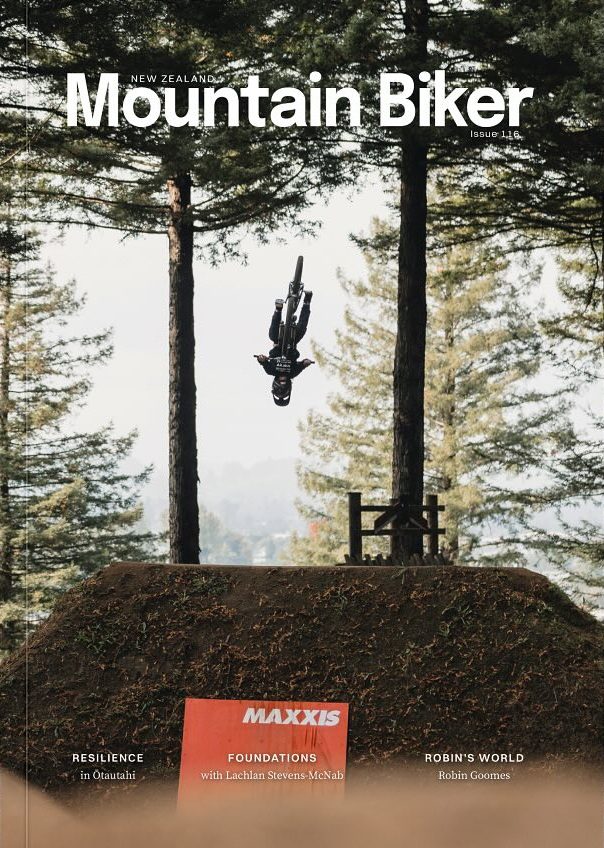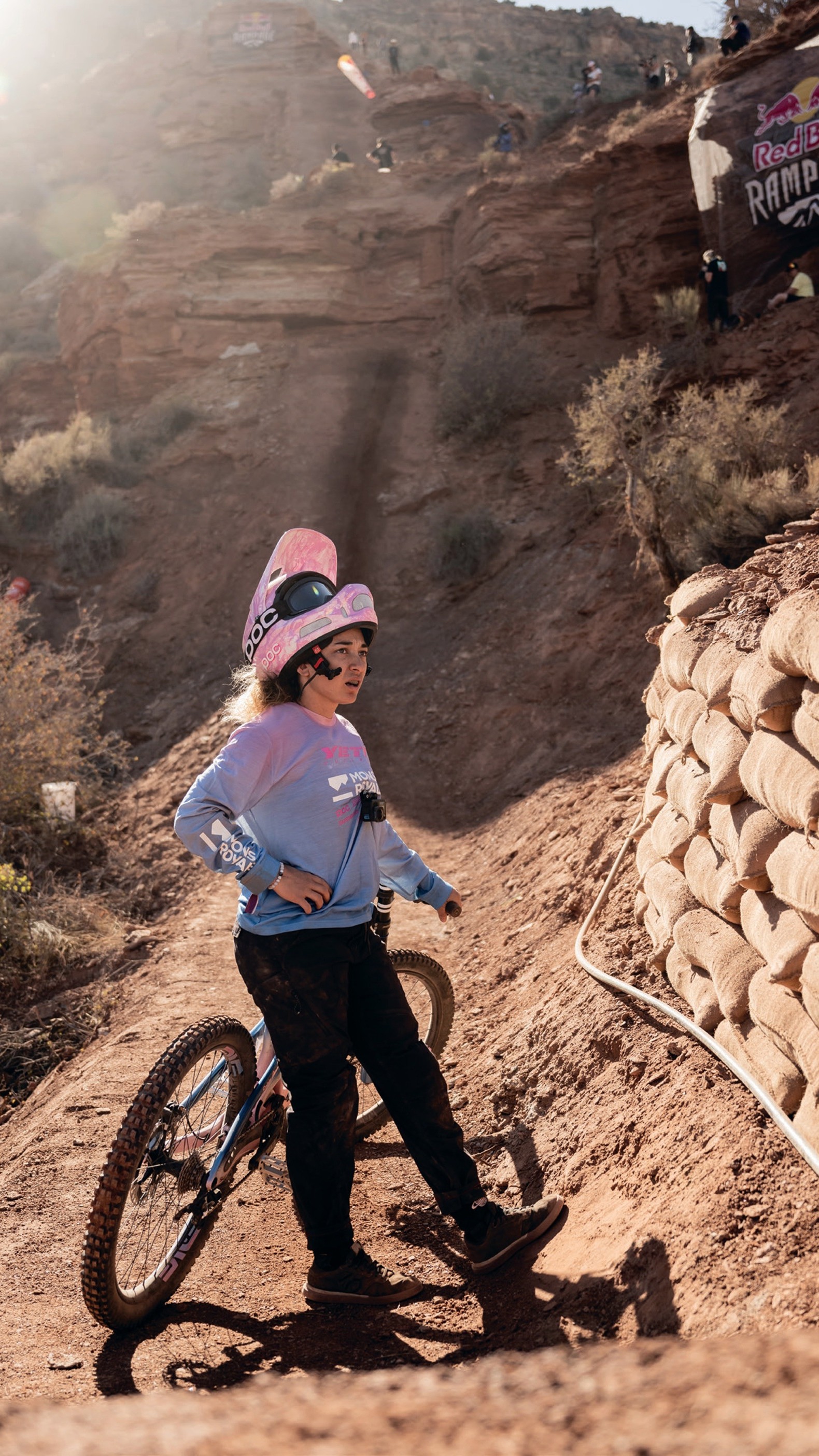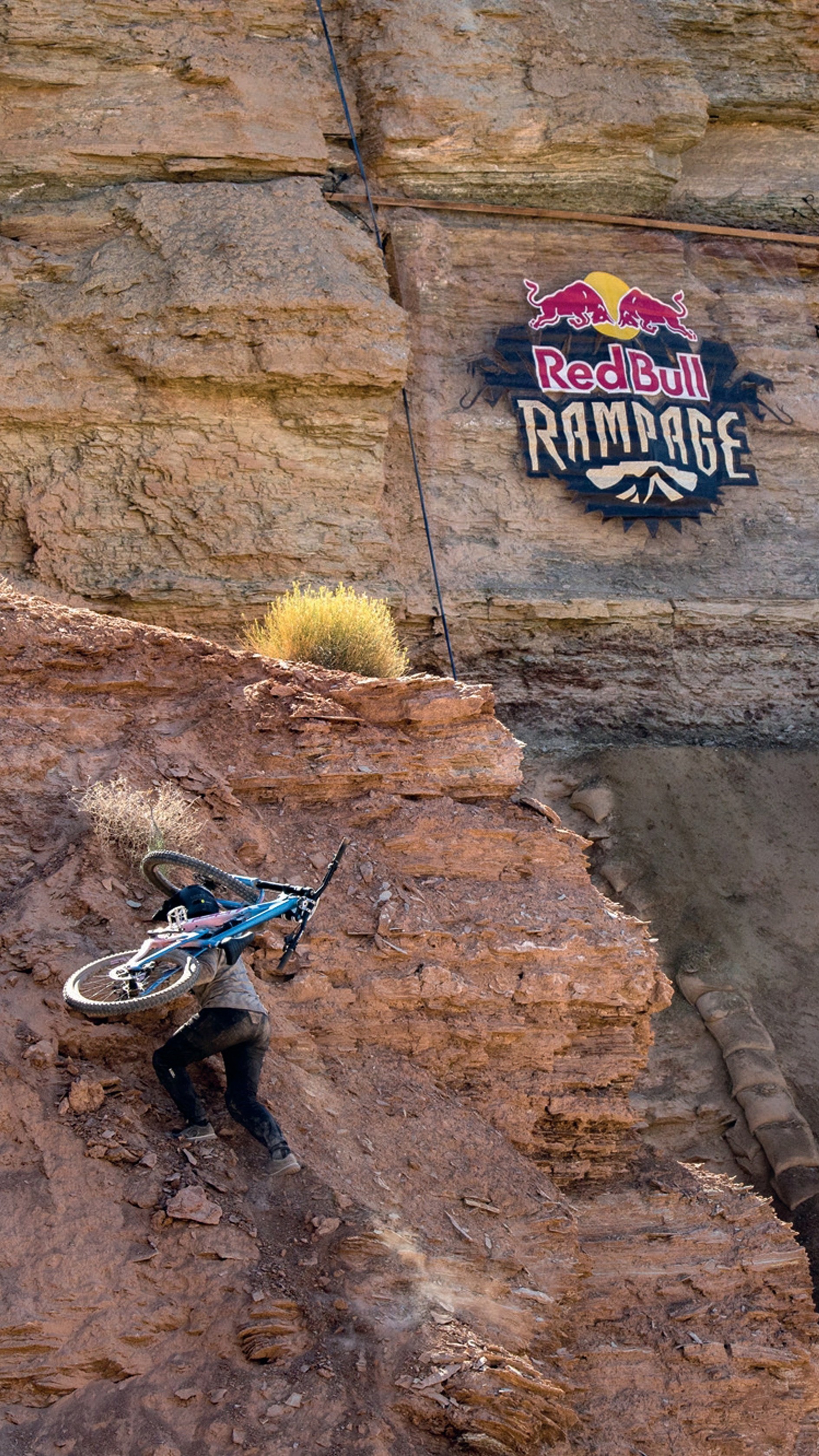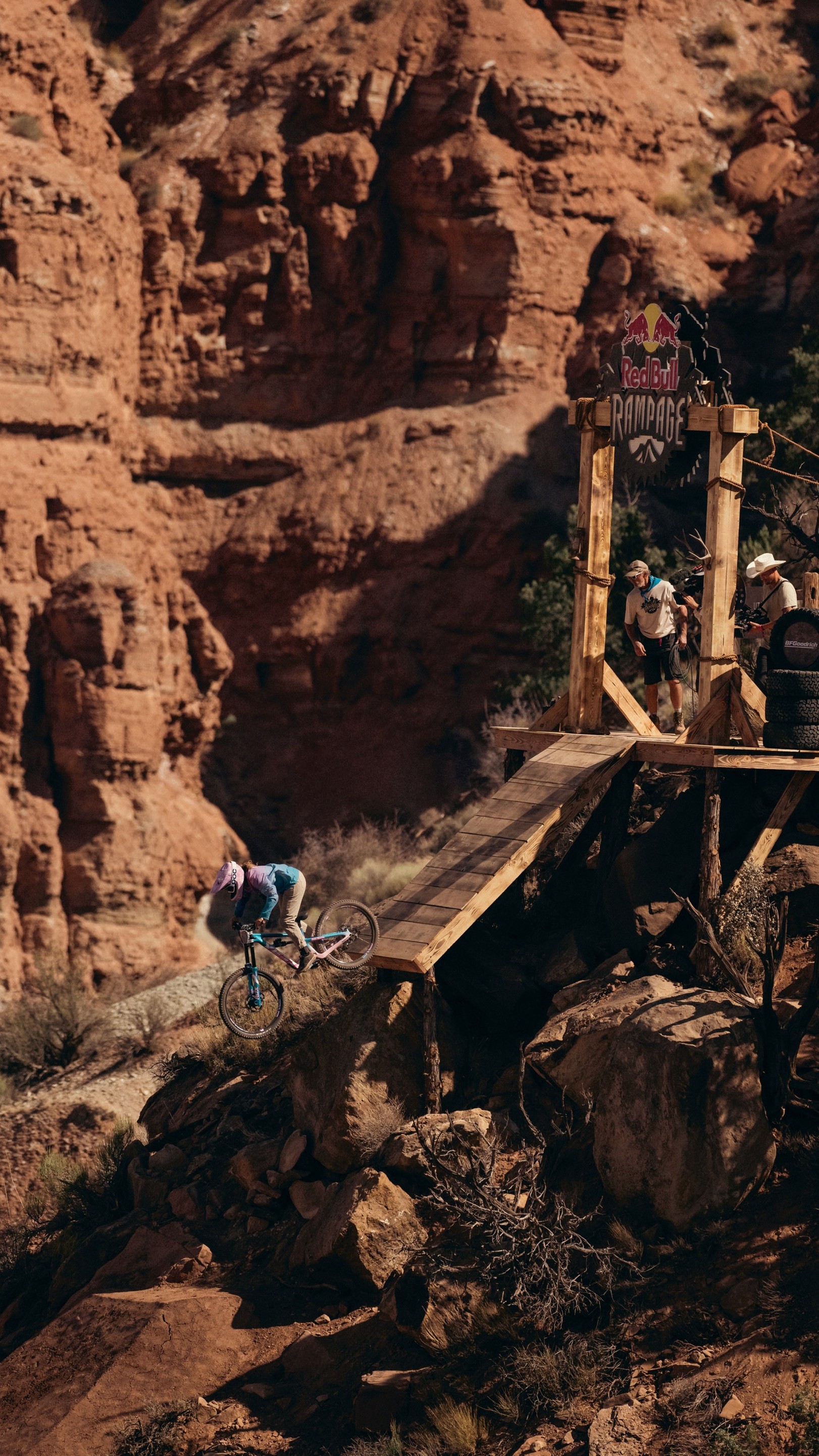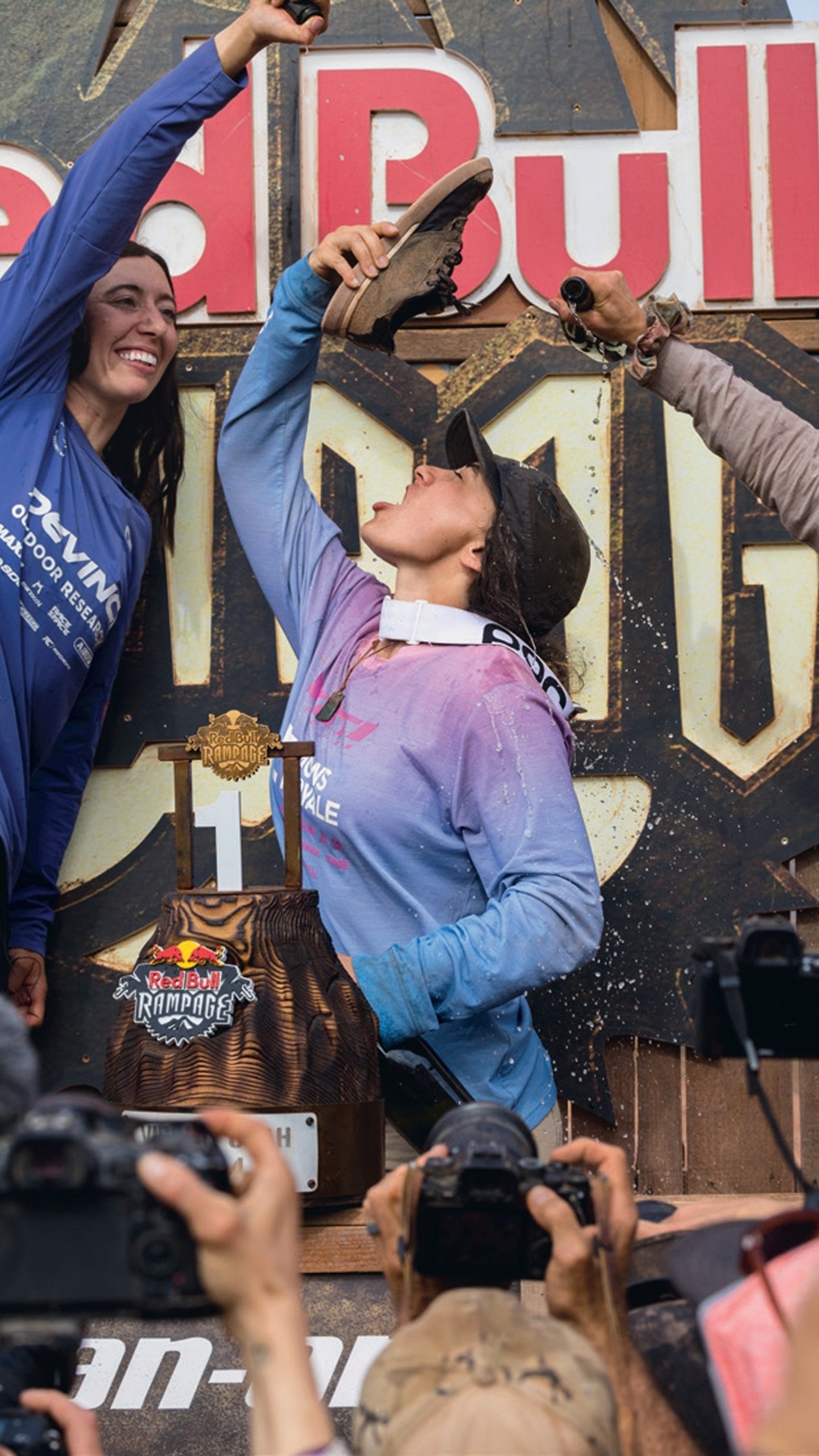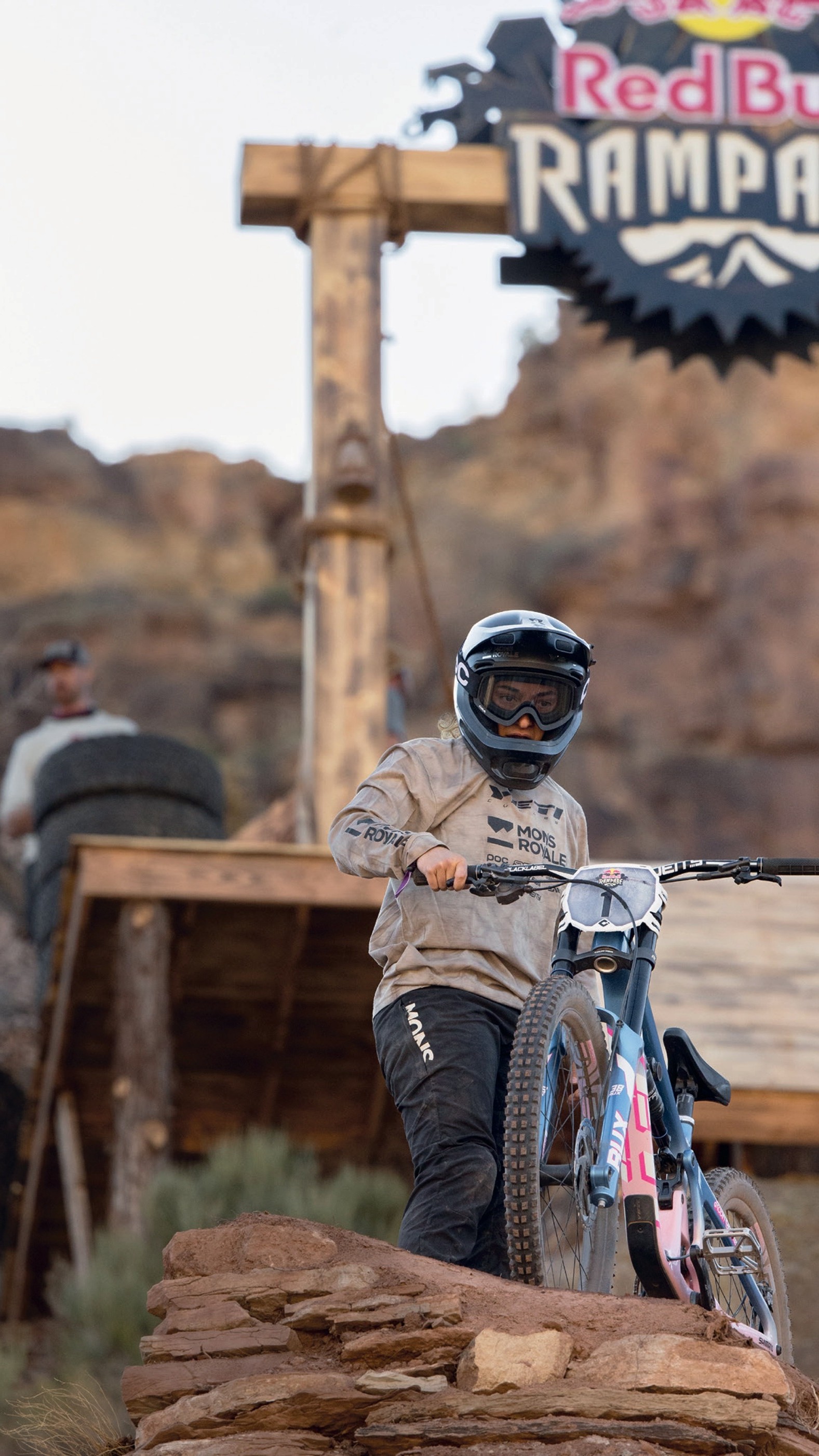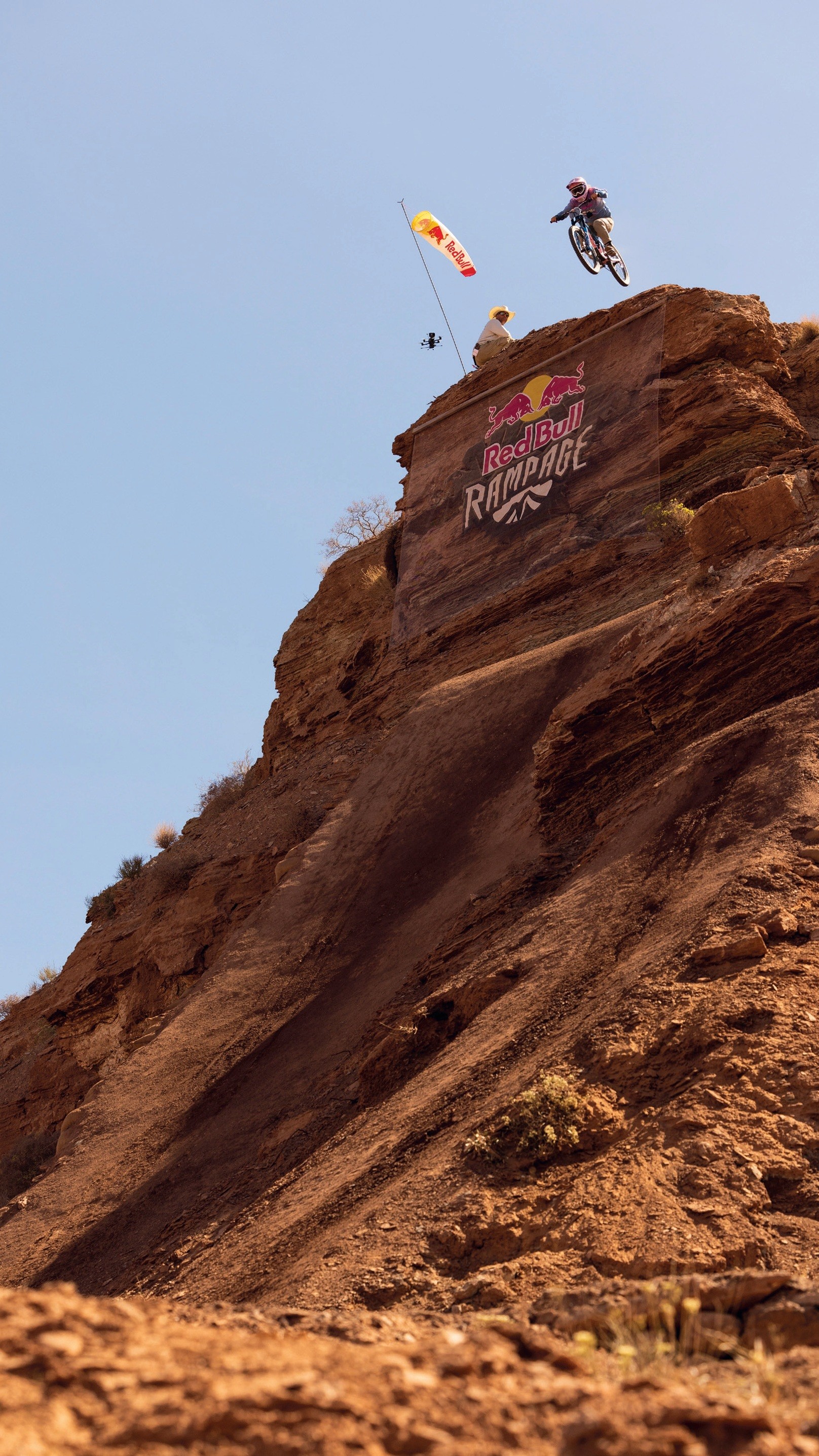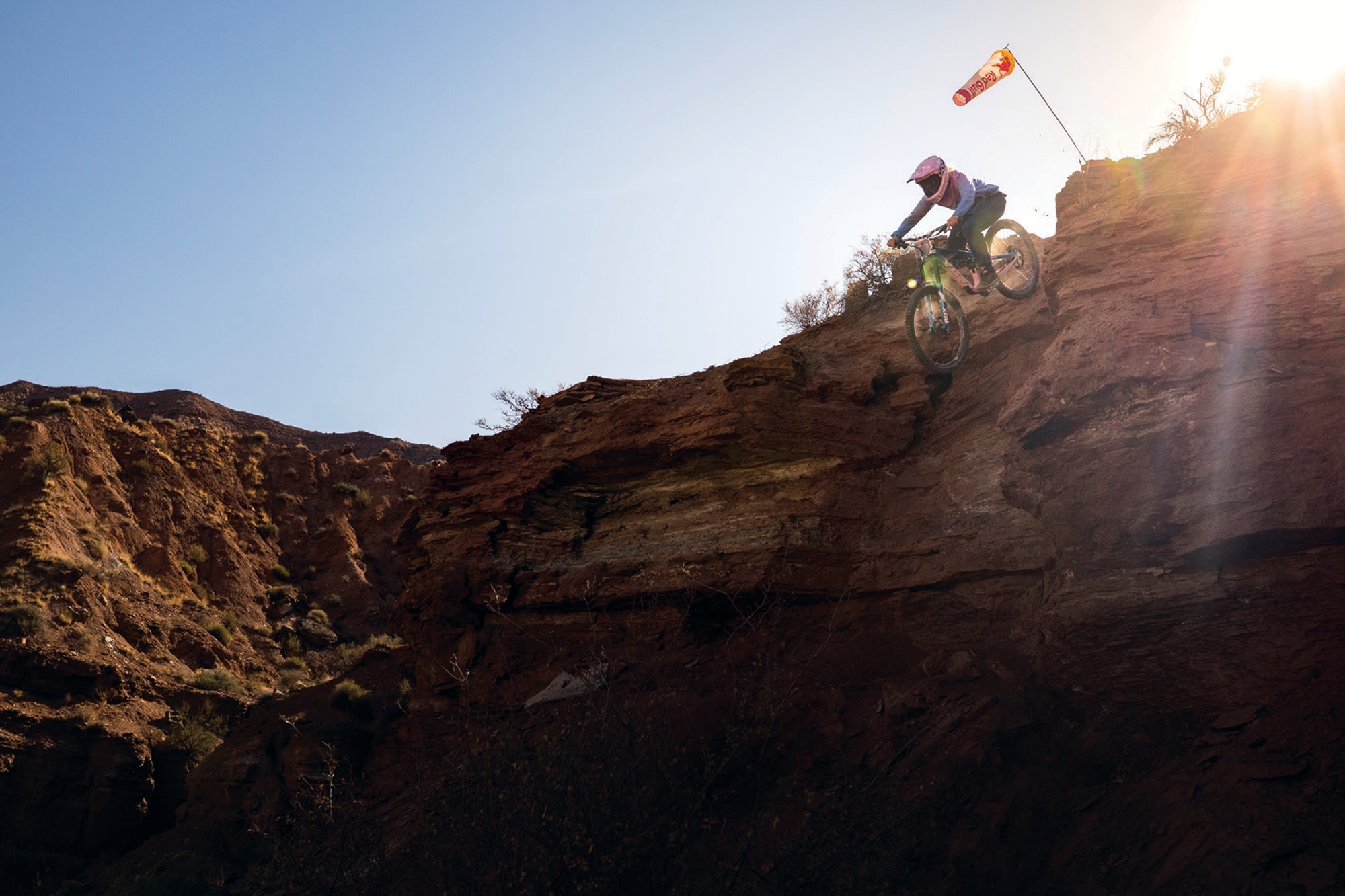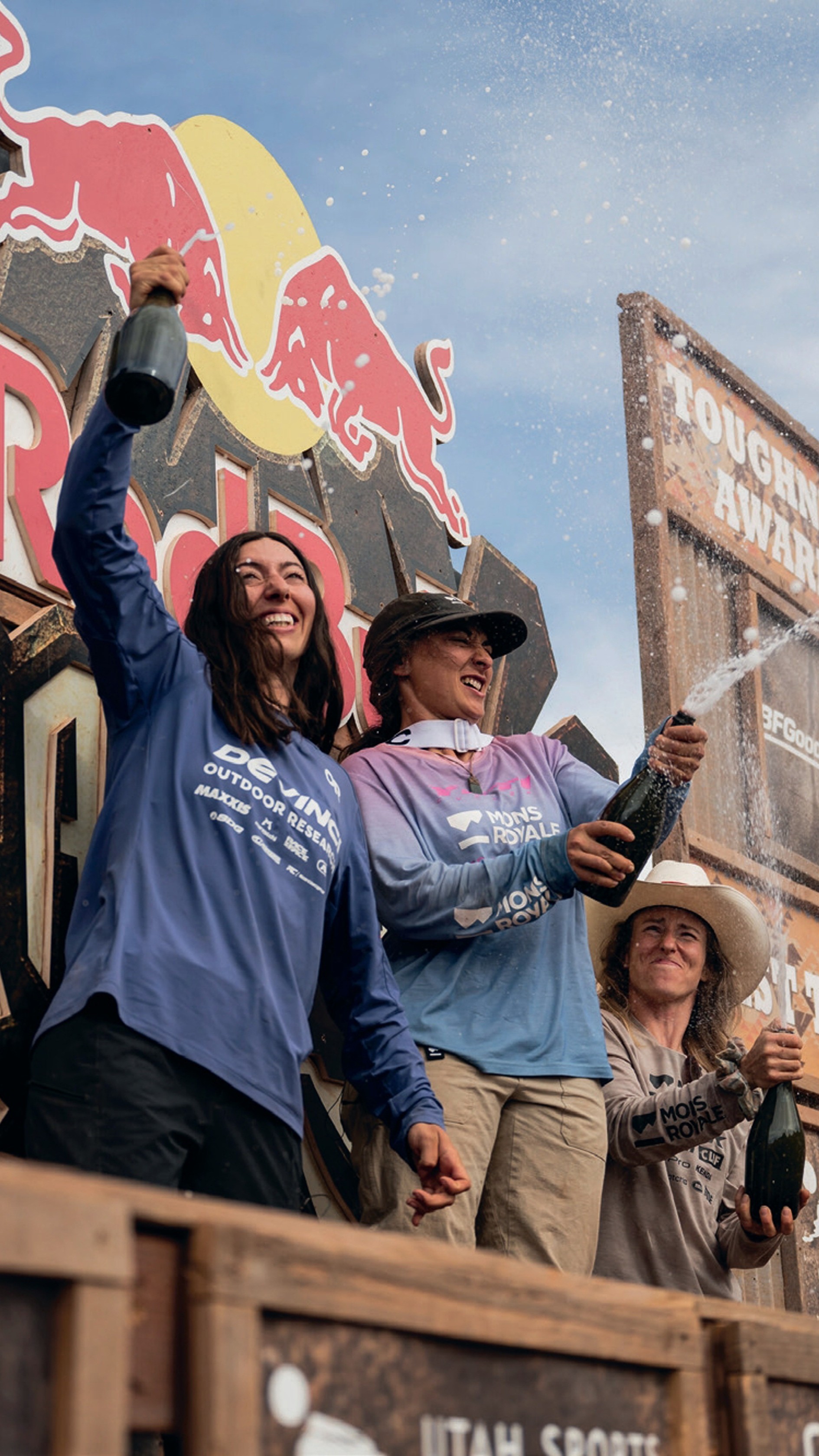Words Kerrie Morgan
Images Cameron Mackenzie, Red Bull Content Pool – Paris Gore, Robin O’Neill, Emily Tidwell, Bartosz Wolinski, Long Nguyen
If you haven’t yet experienced the thrill of watching Robin Goomes drop in down a 12.5m (41ft) rock face to win this year’s Red Bull Rampage, do yourself a favour and put this magazine down right now; pull out your phone and open YouTube.
Once you’ve watched it, you’ll be asking; “So, why weren’t women able to compete at this event until 2024??” It’s a mind-boggling question, especially after watching Robin and her badass brethren of equally-capable women flip, whip and speed their way down the red, rocky, tumble-weed-dotted surface of the Virgin, Utah desert. Despite launching riders off of cliff faces since 2001, the infamous Rampage has just included women for the first time this year. Yes, 2024. Previously, the idea had been discarded under the pretence of it being too physical, too gnarly, too unwieldy for a woman to handle.
However, in October 2024, Robin along with Casey Brown, Vinny Armstrong, Camila Noguiera, Vaea Verbeek, Vero Sandler, Georgia Astle and Chelsea Kimball proved any naysayers wrong, flipping (literally) the narrative and securing female free riding’s position, at the most extreme level, on the global stage.
But Robin’s story doesn’t begin there. Believe it or not, Rampage is just another string to the 28-year-old’s bow. Starting out life on the Chatham Islands, some 800km off the coast of Christchurch, Robin’s childhood in the isolated, tightknit community was the perfect grounding for a life of adventure, determination and success.
In the early days, Robin tore around the island on dirt bikes with a crew of guy mates who were of the opinion; “she wants to ride motorbikes—great, let’s go!” It was only natural that more serious riding later followed suit.
“I think I was really lucky in the beginning. That space was so easy to be in, it was really normalised, and it didn’t matter that I was a girl riding a dirt bike,” explains Robin.
Having left the island for high school, Robin took up mountain biking when she was in the Army, thanks to encouragement from a group of riding friends who, as Robin puts it, “were also all dudes”. She explains that finding guys to ride with, who couldn’t care less about what your gender is, is the key to a positive experience.
“When I did eventually face negativity, it didn’t matter anymore, because I’d already done so much,” says Robin. “It was just like, ‘whatever dude’. The positive felt like it was stronger than the negative, for sure.”
Since taking up mountain biking, everything has snowballed for Robin and, these days, she’s not only the inaugural women’s Red Bull Rampage winner but can also claim the title of ‘first woman to land a backflip in a Crankworx competition’; was featured in the Red Bull film Anytime; and competed in Red Bull Formation in 2022—to name just a few accolades.
Robin credits her island upbringing, and her role in the Army, for the resilience, determination and confidence she relies on today as a professional mountain biker. “It definitely has helped,” says Robin. “I don’t exactly know where it has helped, but it definitely has. I think growing up on the Chatham’s was the craziest place to be brought up. I went back recently, and it is just so far away! If you want New Zealand to feel really big, go to the Chatham’s. Growing up in a place like that gives you good drive [so that] when you do get an opportunity, you definitely want to take it. That type of upbringing can take you anywhere really, but it feels like the start line was so much further back for me than for most people. And then with the Army—so many good skills were learnt there and, without that, I’m not sure where I’d be.”
Being the first woman to drop in, from the first cohort of women to ever compete at Rampage, was not Robin’s first or only foray into paving the way for other women. During her time in the Army, she was one of the only women to be based out at Scott Base as a machine operator. It seems that leading the charge comes naturally to this humble Kiwi.
“It hasn’t been a conscious goal of mine,” confesses Robin. “But I think with the stuff I like to do, I always end up working in these male dominated spaces. What I learnt—especially from the Army—is that, as a female working in a male dominated space, you have to work (what feels like) twice as hard just to keep up. So I guess taking that into anything I’m doing is the goal.”
No doubt some of the skills Robin has gained throughout her life so far came into play when she was waiting in the start gate, anticipating her drop in at Rampage. “I kind of just treated it like any other competition, where you just try to visualise your run, step by step, one feature at time, focusing on the main points, like where you can take a moment to reset yourself and go again, what tricks you really need to dial in, braking points. All of those little details were really all I was thinking about,” explains Robin. “Then there was a moment when I was in the start gate, with the starter, Darren—he’s started every single Rampage I’m pretty sure, he’s iconic—and when you’re sat in the start hut and they call your name, and they’re like ‘rider dropping!’ and they count you in… I just kinda had a laugh to myself. I thought, I am literally watching this on TV—but I’m doing it. It was quite a surreal but cool moment.”
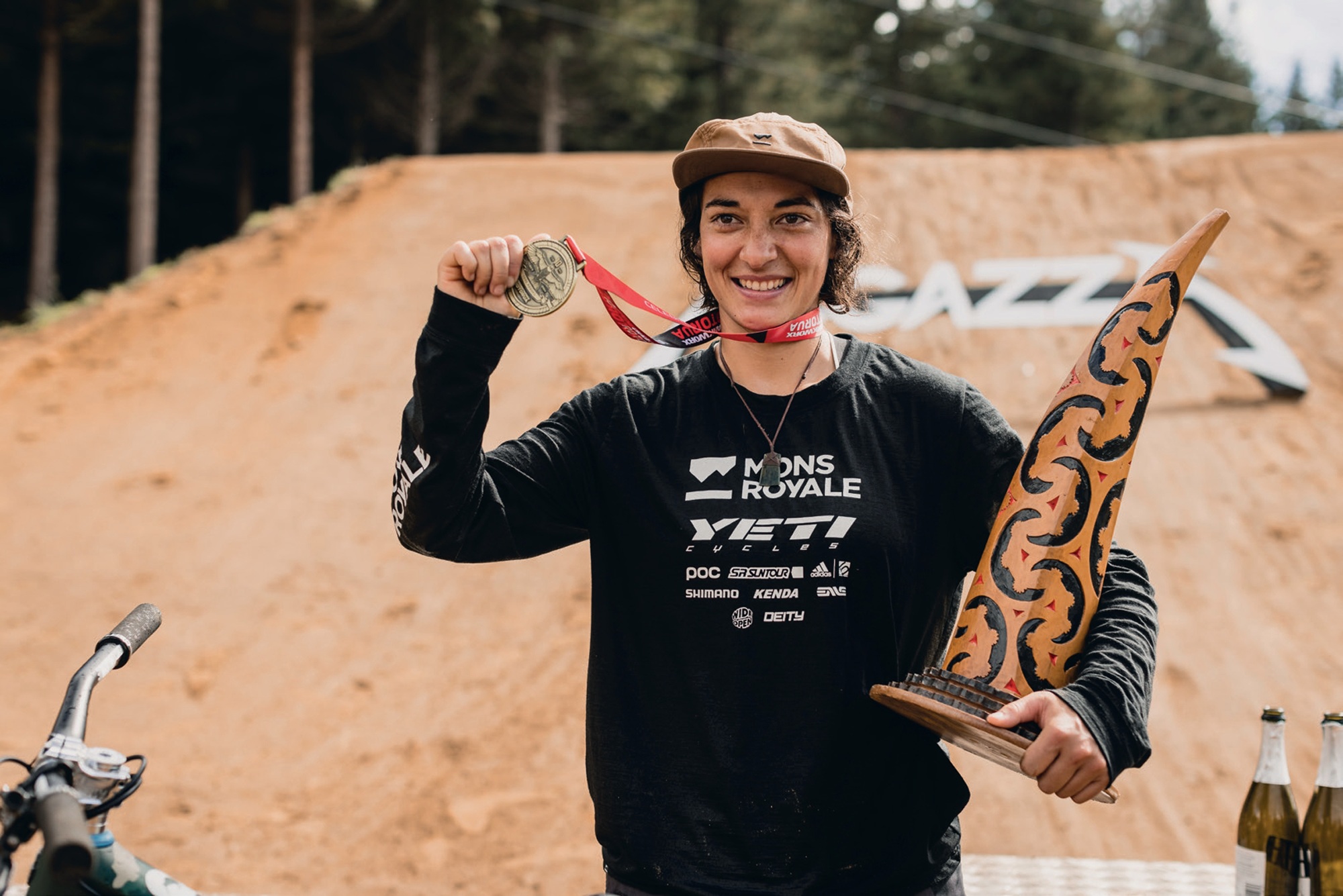
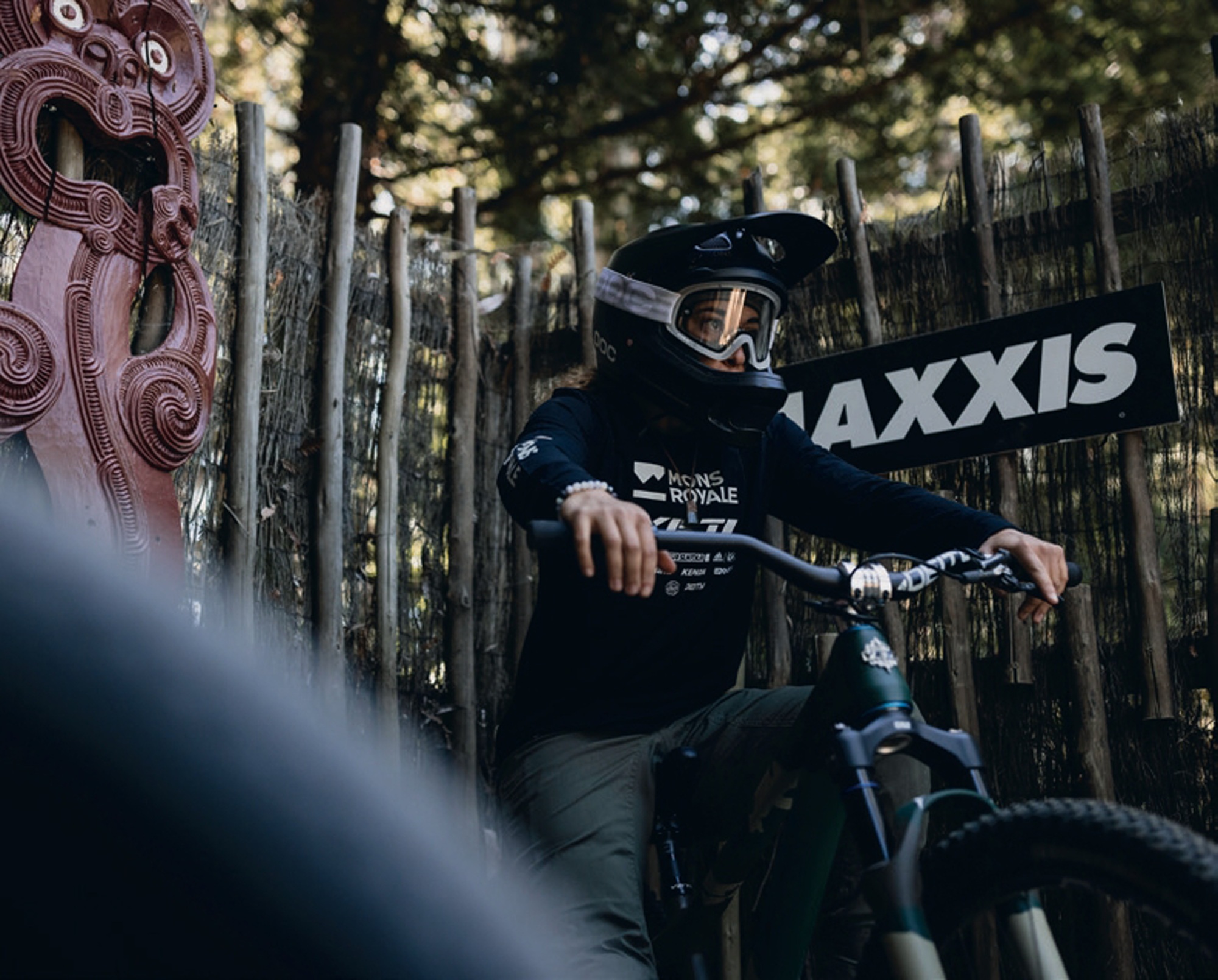
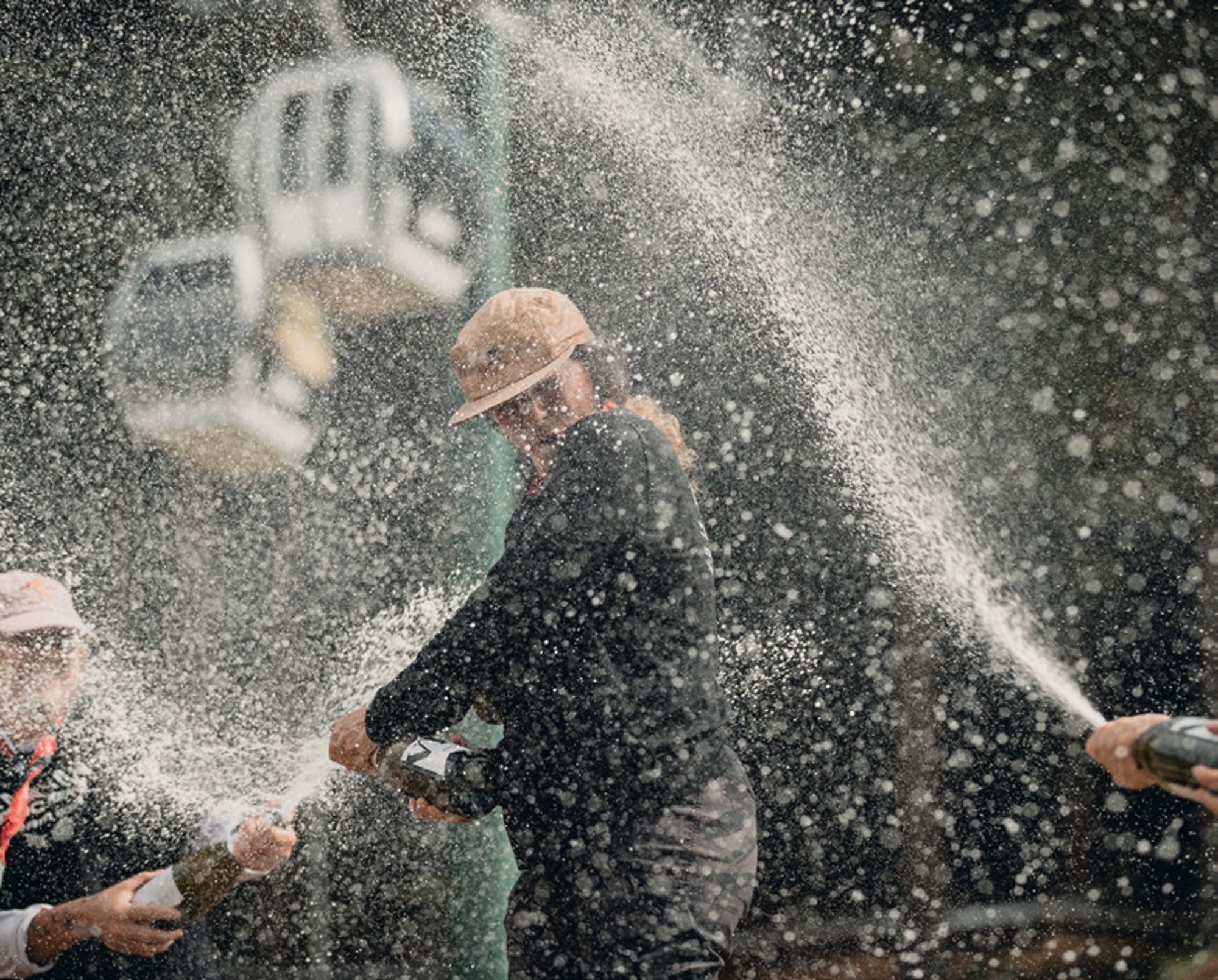
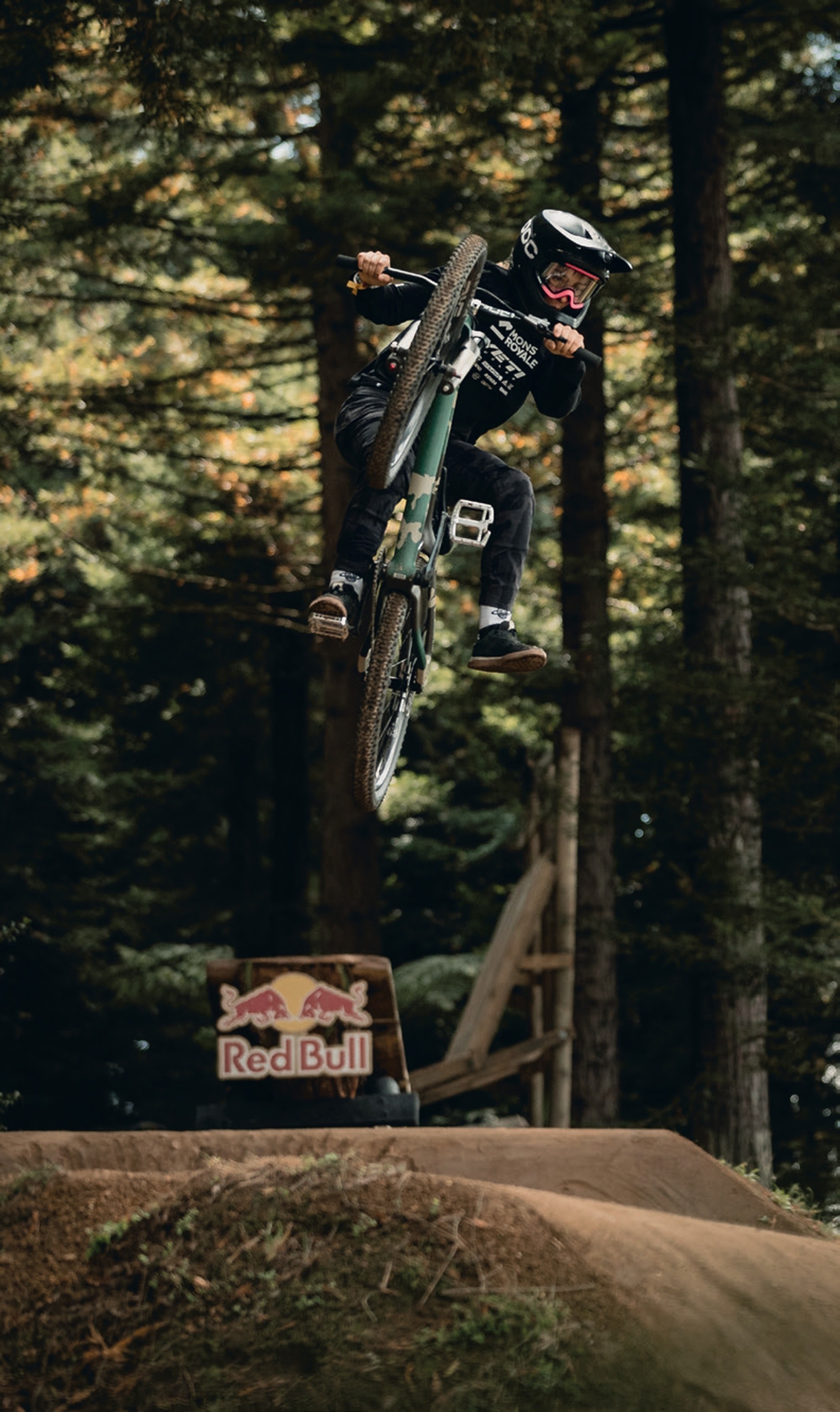
Robin credits some of her cool-as-a-cucumber approach to the fact that she designed and dug the lines she would be dropping into that day.
“It’s cool because you can kind of decide how big or how small you want to go,” she explains. “But when you’re looking at a completely empty hill—a full blank canvas—it’s kind of overwhelming and it can be hard to know if you’ve gone too big or too small at the time. Until you start building, you’re not really sure if you’ve gone too big or if it’s even possible… You have about a day where you’re like, ‘Oh, maybe I’ll back out of this’ and after that you’re locked in, and you just have to do it, and you have to find a way to make it work. You can choose to go bigger or smaller, but I just really wanted to try and find the limits, where the edge was of what was possible with my comfort zone. I was trying to go big.”
And big she went.
But, we all know that what goes up, must come down—and free riding is no different. Human beings weren’t designed to fly and, for the brave few who do choose to throw themselves off of cliff faces attached to a bike—for fun— there can be serious consequences. But what is less talked about is the massive comedown extreme sportspeople often feel post-event or milestone. Robin’s ride—and success—at Rampage saw her struggle to merge back into “normal life” once the event wrapped.
“Recovering from other events is pretty standard. This one was very different,” she explains. “Rampage feels like an endurance event. It’s not just like you turn up, you do a few days practise and then you compete. You build it, so mentally, physically, you’re just ruined—and then you’re competing. It was two weeks long, basically, of really high intensity stuff. Then the comedown was unbelievable. It was probably the greatest moment of my life—I don’t know how I’m ever going to top it—so I guess coming home and just doing normal stuff for a bit…. I definitely struggled with this one. It felt super extreme, and it was weird—I’d just done the coolest thing ever and then I came home and was just mowing the lawns one day, like, I don’t even know what’s going on anymore?!”
Robin explains that the feeling is the same with any other event, just on a much smaller scale. “I think that is literally part of the ride, though—when we sign up to do these things, I think that’s the full journey, it’s not just the one piece you see on a live stream… it’s all of that stuff; the before, middle and end.”
Competing against some of the world’s toughest riders, in arguably one of the toughest environments on the planet, requires a support crew who you can trust and who will have your back throughout the entire journey—no matter what gets thrown their way. Watch any clip of Robin’s ride at Rampage, and you’ll soon see the level of stoke and elation her team shared before, during and after her winning run. The experience running through Robin’s dig crew ensured she could simply tell them what she wanted her line to look like, and they’d just get on with the job. Not only that, but they’d also act as human Guinea Pigs, testing out the trails they’d dug, alongside Robin, and providing her with their suggestions for improvement.
“Just having that bit of feedback where they’re like, ‘If I was gonna do it, I’d want this to be different’ or something, so it wasn’t just my own ideas—because sometimes you can get it wrong—but to have two or three people saying the same thing, you’re like, well, if three of us are saying this, then let’s definitely do it!” explains Robin. “Everyone just added so much to the full package. I don’t think you can just turn up as a really good rider, to Rampage, and win. You have to rely so much on everyone out there. My team should be taking the credit really.”
While the dig crews are a massive part of Rampage, myriad people help bring the event together across the two weeks that riders and their crews are on site. With this year being the first year women could compete, there also seemed to be an organic increase in the number of women working behind the scenes. Filming, shooting, organising press, creating content, interviewing—wherever you look at Rampage there are women on the tools, and the event has been touted as a tremendous coup for women in mountain biking media.
“I had Martha [Gill] filming for me,” says Robin. “And she was not only there behind the camera, but she was so good for me. You know, she’s a competitive mountain biker as well so she knows what it’s like to be in pressured situations. So, just to have her there, calming my nerves—she’s really funny so it kept the mood really light.”
It goes without saying, that the biggest focus at Rampage this year—and the angle that has received the most media attention—was the fact that women were able to compete for the first time ever. I won’t go into the history behind that, as there are plenty of brilliantly written articles about it online, but the inclusion of women in this iconic event has been a long time coming. Many people will recall Red Bull Formation, which was a female only, Rampage-style competition first held in 2019. A long-time project of trailblazer, Katie Holden, Formation was the answer to women’s exclusion from Rampage at the time, and, in its own way, ensured the gates would eventually open for women to compete at the then men’s-only event. When the news broke that women were to be included in the 2024 Red Bull Rampage, riders, mountain bike media and women worldwide let out a collective—and loud—cheer. Tears were shed, fists were pumped, jumps for joy were, well, jumped—both on and off the bike. It was a momentous occasion, and a meaningful one for women in sport everywhere. For people like Katie Holden and Casey Brown, who have been relentlessly crusading for decades for women’s inclusion in the historically testosterone- fuelled event, as well as gender equity in the bike industry as a whole, the news of a women’s category at Rampage marked a turning point in their careers—and indeed, their lives. Casey has been quoted as saying the decision was, “the best news of my life!” While Katie posted on her social media with a photo of herself crying tears of happiness and relief, stating: “WE DID IT YOU ALL”. Safe to say the decision meant a huge amount to those in the industry—riders and advocates alike.
“It’s such a privilege to be among the first riders to do such a legendary event,” confirms Robin. “Everyone was in the same boat as far as learning and experiencing things for the first time, and quite supportive of each other. You might think, ‘oh they’re really stressed’ but then you’re really stressed too, so you’re like ‘I know what you’re going through!’ And it was a lot, it was really overwhelming, but everyone was super supportive.”
In a not-so-subtle nod to modern-day girl power and the generation of women blazing trails in free riding, Robin opted for a Barbie-themed bike, shirt and helmet on the day. While Robin and Barbie might not appear to have a lot in common (although how much more epic would the Barbie movie have been if the blonde icon herself dropped in off a 12.5m rock face in the opening scene?!) the move was a considered one.
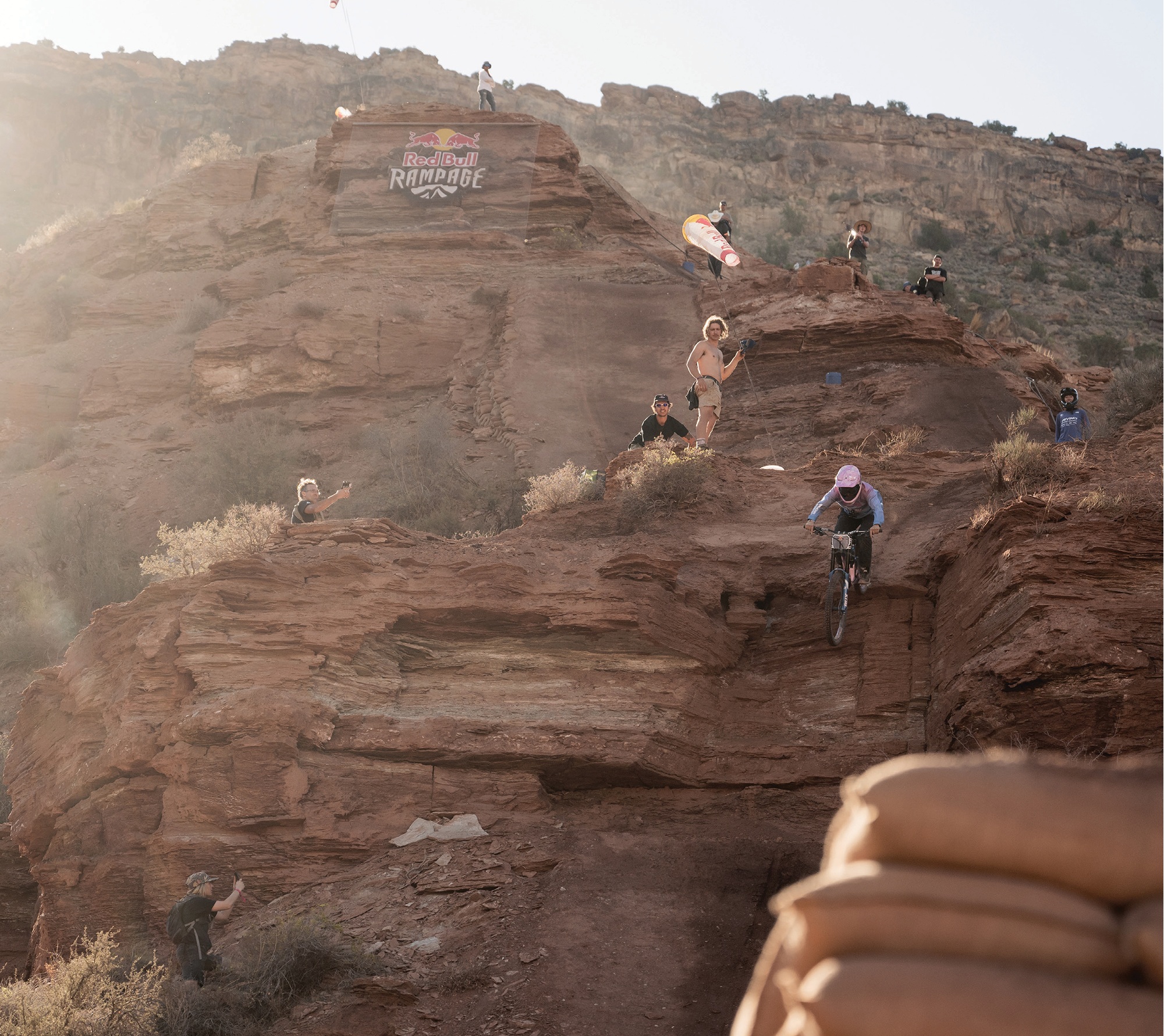
“I don’t know how to say this without swearing,” laughs Robin. “But it was a ‘yeah the fuckin’ girls!’ but at the same time, ‘fuck the haters’. It was a little bit sarcastic because, everyone who knows me, knows that I’m not a ‘Barbie girl’, pink isn’t the first colour I choose, but I thought it was a really fun idea and Rampage was the most fitting event for it. As a kid, I didn’t like Barbie at all, and I remember my first bike was a hand-me-down Barbie bike and my dad painted it because I was not down to ride this pink bike! And then when the Barbie movie came out [in 2023], I watched that and it was like, ‘actually, we’re bad bitches’. So yeah, I decided to lean into that. There was a lot of positivity around that bike. People loved it. I loved it. It’s the coolest bike I’ve had.”
Robin explains that she and the other “bad bitches” of Rampage are close friends, having ridden together, competed against one another, and even worked on film projects together previously. Now that they’ve competed together as the first cohort of women at Rampage, the bond between them will no doubt be even stronger. And what better crew of ambitious, brave, highly-skilled women to be at the helm, paving the way for future generations of female free riders?
“The younger generation are on it!” says Robin. “There is so much talent out there, so I think as long as they’re doing what they love there’s no reason why they can’t go the distance. I feel like there’s nothing holding them back at this point—everything feels like it’s been normalised, and they can just fully get after it. You can see with some of the women coming through the sport, it [Rampage] is going to grow so rapidly and get so big… it’s already happening and we’re going to see it more over the next few years.”
As far as the format of Rampage goes, the men’s venue was still in a slightly different location, separated from the women’s stomping ground by a ridge. Although competing on different sites, competitors saw each other during lunch breaks, but Robin explains that in the lead up to the event, she rode with some of the competitors from the men’s category, and had their full support: “I was riding with a few of the guys and training up at Brett’s house in Canada, and they were so helpful. Obviously they’ve had years of experience, so they were just giving me tips and insights like, ‘this is what sometimes happens, and this is what you can expect’. Those little bits of advice were really helpful. They were really supportive.”
While her male counterparts were a wealth of knowledge, experience and support, the question of whether women would ever be included at Rampage has ping-ponged across the Internet for the best part of two decades with just about everyone—mountain biker or not—having an opinion on the matter. In fact, pop ‘Red Bull Rampage Women’ into your Google search bar and the results will include everything from magazine features to newspaper articles, blogs, forums—and even a thesis!—discussing the reasons for (and in some ridiculous cases, against) women’s inclusion in the iconic competition. As the years passed and a decision seemed imminent, the conversation reached fever pitch, with many in the mountain bike media expressing their frustration at the seemingly never-ending quest to get women included in the event. But the media— and in particular, social media—can often over-emphasise or over-hype a situation that in reality might not feel as present or all-encompassing. So what was it really like on the ground at Rampage?
“It was definitely a feeling,” confirms Robin. “You could feel that energy the whole time. And it was such a positive thing, feeling the sport growing and moving in such a good direction, and knowing so many people were watching and supporting and just stoked. So many women came out for it, too. Lots of people have actually messaged me saying they teared up a bit, so no one’s alone there—I’ve had a lot of people definitely feeling that which is cool. It’s a huge moment for the sport.”
There’s an old adage often thrown around in feminist circles, that goes: ‘You can’t be what you can’t see’. It refers to the fact that unless women and girls actually see other women and girls in boardrooms, around building sites, or in the chambers of parliament, how will they know they could be there too? Nowhere is this more relevant than in women’s sport. The more widely footage and content is shared, the better chance women have of being introduced to a sport, competing in a sport and—hopefully, if it’s the goal—being sponsored to become a professional in said sport. Rampage has put free riding—and women in mountain bike media—on the map for future generations of girls and women, highlighting the massive shift the sport is currently experiencing at races and events, out on the trails, and behind the scenes. It feels like the playing field is finally being levelled, but there is still a long way to go.
“I’m just working all this stuff out for myself, but I’m in a really good position now so I’m gonna say, yes, Rampage has marked a turning point for women in the sport,” explains Robin. “Rampage is huge and there are male riders who don’t compete or do anything—they just show up to Rampage once a year, that’s all they have to do and they’re fully sponsored riders. They just do one thing! We’ve had to make our way by doing multiple events or just bringing a lot more, and now that we have that stage—it won’t stop me from wanting to do all of the other stuff I do, because I love doing everything—but it’s massive for us, massive for sponsors and I think it’s hopefully going to even out the playing field for sponsorships. In terms of negativity, Martha did get some actually. The thing is, Rampage gets so many views, and I feel like when you’re getting that high number of views, you’re gonna get haters no matter what. There were comments about men being the diggers but women filming because it’s a non-physical role. I mean….”
With all the excitement and buzz around this year’s Rampage gradually starting to settle, what can we expect to see next from Robin Goomes?
“It’s kind of cool this year, because the international season is actually starting in New Zealand,” says Robin. “We’ve got Natural Selection happening in Queenstown, in February, then Crankworx in Rotorua, in March. Then I’ll probably leave after that. So until March, I get to be home, which is nice.
“Rampage was such a big goal and to have that ticked off is, for me, massive. With Rampage…. You also win a life-changing amount of money and today is actually settlement day—I’ve just bought some land and I’m about to begin building a training compound! It’s really exciting actually.”
As for the rest of us—we might just be living in Robin’s World, but it sure is exciting.
